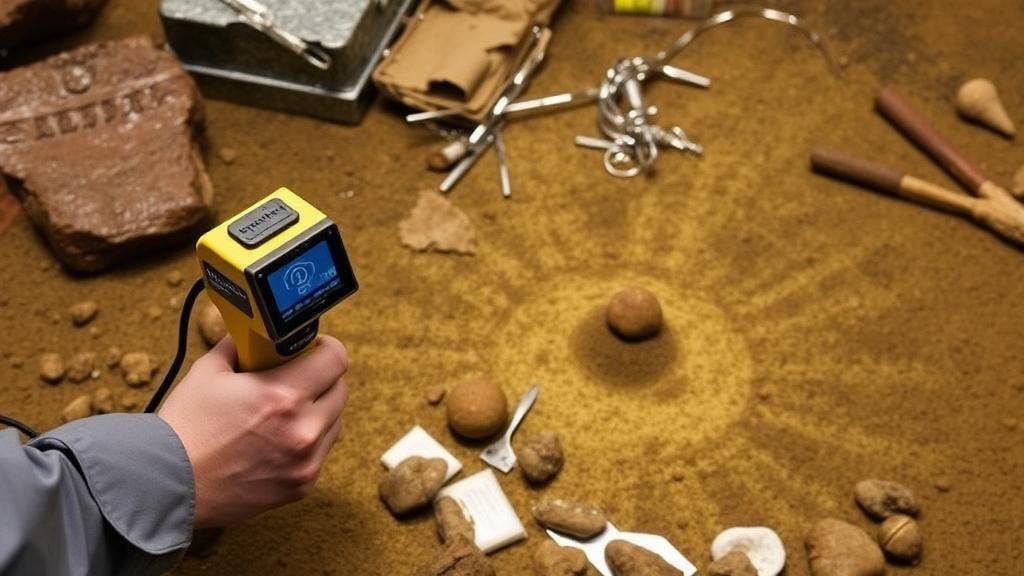How to Use Magnetometers to Detect Ferrous Relics in Heavy Sediment Layers
Introduction to Magnetometers
Magnetometers are sensitive instruments used to measure the strength and direction of magnetic fields. They have a variety of applications, particularly in the fields of geology, archaeology, and environmental studies. One of the more intriguing uses of magnetometers is in the detection of ferrous relics–iron and steel objects–from various historical contexts, particularly when these items are buried within heavy sediment layers. This article explores how magnetometers can effectively detect these relics, the challenges involved, and best practices for operators.
Understanding Ferrous Relics and Their Significance
Ferrous relics represent a significant part of our historical and archaeological heritage. These artifacts often provide insights into past human activities, such as manufacturing processes, warfare, and everyday life. For example, items like iron tools, weapons, and structural components can shed light on the technological advancements of past societies.
The significance of detecting ferrous relics lies not only in their inherent value but also in the information they can provide. systematic study of these artifacts allows archaeologists to construct narratives about cultural evolution and technological change.
Principles of Magnetometry
How Magnetometers Work
Magnetometers operate on the principle that ferrous materials produce a measurable magnetic field. Various types of magnetometers are available, including fluxgate, proton precession, and cesium vapor magnetometers, each with its own operational principles. The most commonly used in archaeology are fluxgate magnetometers, which work by inducing magnetic fields and measuring the response. When a ferrous object is present in the vicinity, it alters the local magnetic field, allowing the instrument to detect its presence.
Types of Magnetometers
- Fluxgate Magnetometers: Highly sensitive and capable of detecting small variations in magnetic fields.
- Proton Precession Magnetometers: Generally used for geophysical surveys, offering good resolution.
- Cesium Vapor Magnetometers: Provide the highest sensitivity and are suitable for deep searches.
Challenges in Detecting Ferrous Relics in Heavy Sediment Layers
Detecting ferrous relics using magnetometers in heavy sediment layers presents unique challenges. Some of these challenges include:
- Magnetic Interference: Natural variations in the earths magnetic field, as well as other magnetic objects in the vicinity, can inhibit accurate detection.
- Depth and Density: Heavier layers of sediment can obscure magnetic signatures, making detection more difficult.
- Calibration of Equipment: Correctly calibrating the magnetometer before a survey is critical to eliminating noise from the environment and achieving accurate readings.
Best Practices for Effective Detection
Preparing the Site
Prior to conducting a magnetometer survey, thorough site preparation is essential. This includes:
- Site Assessment: Understanding the historical context of the area to identify potential hotspots for relics.
- Sampling Grid Establishment: Creating a systematic grid can help ensure that the entire site is surveyed evenly.
Conducting the Survey
During the survey, operators should employ specific methodologies for optimal results:
- Consistent Walking Speed: Maintaining a uniform speed while surveying helps reduce errors in data collection.
- Overlapping Measurements: Ensuring that data points overlap can help create a more comprehensive magnetic map.
Real-World Applications and Case Studies
A notable example of magnetometers in action occurred during a survey near a historically significant battlefield. Archaeologists used magnetometers to locate hidden remainders of artillery and ordnance buried in heavy sediment. The survey successfully identified multiple locations, leading to an excavation that revealed valuable artifacts and insights into military strategies used during the conflict.
Similarly, in the context of historical sites, magnetometry has played a key role in identifying foundations and structural components of ancient buildings, facilitating archaeological digs that have uncovered rich cultural histories.
Conclusion and Actionable Takeaways
Magnetometers are powerful tools for detecting ferrous relics, even in challenging conditions such as heavy sediment layers. By understanding the principles of magnetometry, recognizing the challenges, and following best practices during surveys, archaeologists and researchers can significantly enhance their ability to uncover historical artifacts.
For field practitioners, consider the following actionable takeaways:
- Invest time in thorough site assessments before conducting surveys.
- Ensure proper calibration of magnetometers to mitigate interference.
- Adopt systematic surveying methods for accurate and effective detection.
With a careful approach, the capabilities of magnetometers can be maximized, ultimately leading to a richer understanding of our past.



